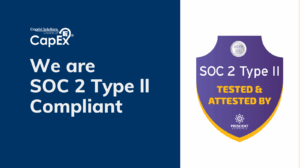The Year of Strategic Capital Investments
2025 is shaping up to be a pivotal year for capital expenditures (CapEx). As businesses navigate rising costs, AI-driven decision-making, and evolving trade policies, financial leaders must refine their investment strategies to maintain a competitive edge and adapt to CapEx trends in 2025.
From AI-powered CAPEX planning to sustainability-driven investments, understanding emerging trends will be essential for optimizing capital allocation and mitigating risks. This article explores the key CAPEX trends shaping 2025 and how organizations can effectively navigate the challenges ahead.
1. Economic Uncertainty and Interest Rate Impacts
The global economic landscape remains unpredictable, with inflationary pressures and shifting regulations directly influencing capital investments. Businesses are:
- Prioritizing high-impact projects that yield immediate or long-term strategic returns.
- Reassessing CAPEX budgets to align with interest rate fluctuations and economic policies, which will be a significant factor for CapEx trends in 2025.
- Mitigating supply chain risks by localizing production and diversifying suppliers.
Key Insight: Financial leaders must balance expansion with fiscal prudence, ensuring CAPEX decisions support both short-term resilience and long-term growth.
2. AI and Automation in CAPEX Planning
Artificial intelligence is reshaping CAPEX planning, allowing organizations to leverage:
- Enhanced forecasting for capital expenditures.
- Automated approval processes that improve efficiency and reduce delays.
- Real-time investment visibility, enabling data-driven decision-making and aligning with CapEx trends in 2025.
However, AI should complement, not replace, financial expertise. Organizations that integrate AI alongside human oversight will maximize its potential while mitigating risks.
Key Insight: AI enhances strategic CAPEX planning, but human expertise remains essential for risk management and informed decision-making.
3. ESG and Sustainability-Driven Investments
Sustainability is no longer optional—it is a strategic necessity. Heightened regulatory scrutiny and investor expectations are driving companies to prioritize:
- Green technologies and energy-efficient infrastructure.
- Carbon reduction initiatives to align with net-zero commitments.
- ESG-driven decision-making to enhance brand reputation and regulatory compliance, which is in line with CapEx trends in 2025.
Key Insight: Companies that neglect ESG investments risk regulatory penalties, reputational damage, and long-term financial setbacks.
4. Trade Policy Shifts and Supply Chain Resilience
Geopolitical dynamics and evolving trade agreements are significantly impacting CAPEX strategies. Organizations are:
- Reevaluating supplier networks to minimize reliance on a single region.
- Investing in domestic production to mitigate import/export risks.
- Assessing tariffs and trade restrictions that may increase costs, another relevant mention for CapEx trends in 2025.
Key Insight: A proactive approach to supply chain diversification is critical to safeguarding CAPEX investments against geopolitical and market disruptions.
5. Digital Transformation and Smart Infrastructure
As businesses modernize operations, CAPEX budgets are increasingly allocated to digital transformation initiatives, including:
- Cloud computing and AI-driven automation.
- IoT-enabled facilities that enhance efficiency and scalability.
- Cybersecurity investments to protect digital assets, emphasizing the growing importance of CapEx trends in 2025.
Key Insight: Technology-driven CAPEX planning is not just a trend—it is a long-term strategic imperative for competitive advantage.
6. The Shift Toward Asset-Light Business Models
Organizations are reassessing traditional capital-intensive investments by adopting:
- Leasing rather than owning key assets.
- Outsourcing non-core operations.
- Shared service models to reduce fixed costs and improve financial flexibility as part of CapEx trends in 2025.
Key Insight: The asset-light approach provides financial agility while reducing exposure to capital-heavy risks.
7. Advanced Scenario Planning and Risk Management
Given ongoing economic volatility, financial leaders are implementing:
- Scenario modeling to assess CAPEX strategies under various market conditions.
- Real-time data analytics to improve investment agility.
- Stress testing to prepare for potential economic downturns, which will be critical for 2025 planning.
Key Insight: Organizations that prioritize adaptive and data-driven decision-making will be better positioned to navigate uncertainty in 2025.
Strategic Agility: The Key to CAPEX Success in 2025
As 2025 unfolds, organizations must adopt a data-driven and flexible approach to CAPEX planning. By staying ahead of key trends—including AI adoption, ESG investments, trade policy shifts, and digital transformation—businesses can:
- Optimize capital allocation.
- Mitigate financial risks.
- Drive long-term growth and resilience, key factors foe CapEx trends in 2025.
Is your organization prepared for the future of CAPEX? Contact our team at Caprivi Solutions and discover how CapEx360® supports best practices and data-driven investment strategies for 2025.





